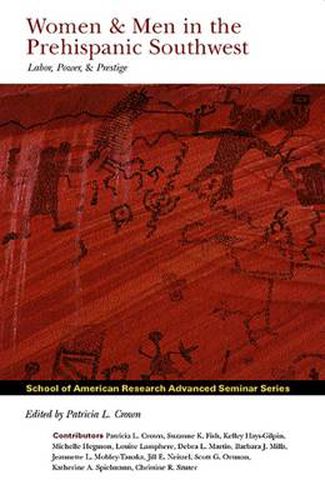Readings Newsletter
Become a Readings Member to make your shopping experience even easier.
Sign in or sign up for free!
You’re not far away from qualifying for FREE standard shipping within Australia
You’ve qualified for FREE standard shipping within Australia
The cart is loading…






Women & Men in the Prehispanic Southwest takes a groundbreaking look at gendered activities in prehistory and the differential access that women and men had to sources and symbols of power and prestige. The authors-including some of the most prominent archaeologists working in the Southwest today-present invaluable methodological and theoretical case studies that take a great step forward in researchers’ ability to read gender in the evidence left behind by ancient societies. Archaeological interpretation is enhanced and critiqued in a summary discussion by a prominent Southwestern ethnologist and feminist anthropologist. The authors’ probe the time period during which Southwestern populations shifted from migratory gatherer-hunters to sedentary agriculturalists and from living in small bands to settling in large aggregated communities. The chapters address the organization of space; ritual activities; mortuary goods and burial facilities; food gathering and agricultural production; hunting and domesticated animals; food processing and preparation; health, nutrition, disease, and violence; craft production; and exchange and interaction.
$9.00 standard shipping within Australia
FREE standard shipping within Australia for orders over $100.00
Express & International shipping calculated at checkout
Women & Men in the Prehispanic Southwest takes a groundbreaking look at gendered activities in prehistory and the differential access that women and men had to sources and symbols of power and prestige. The authors-including some of the most prominent archaeologists working in the Southwest today-present invaluable methodological and theoretical case studies that take a great step forward in researchers’ ability to read gender in the evidence left behind by ancient societies. Archaeological interpretation is enhanced and critiqued in a summary discussion by a prominent Southwestern ethnologist and feminist anthropologist. The authors’ probe the time period during which Southwestern populations shifted from migratory gatherer-hunters to sedentary agriculturalists and from living in small bands to settling in large aggregated communities. The chapters address the organization of space; ritual activities; mortuary goods and burial facilities; food gathering and agricultural production; hunting and domesticated animals; food processing and preparation; health, nutrition, disease, and violence; craft production; and exchange and interaction.